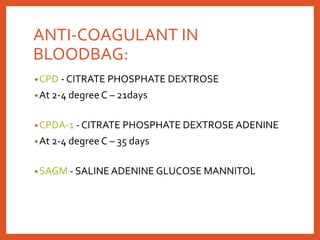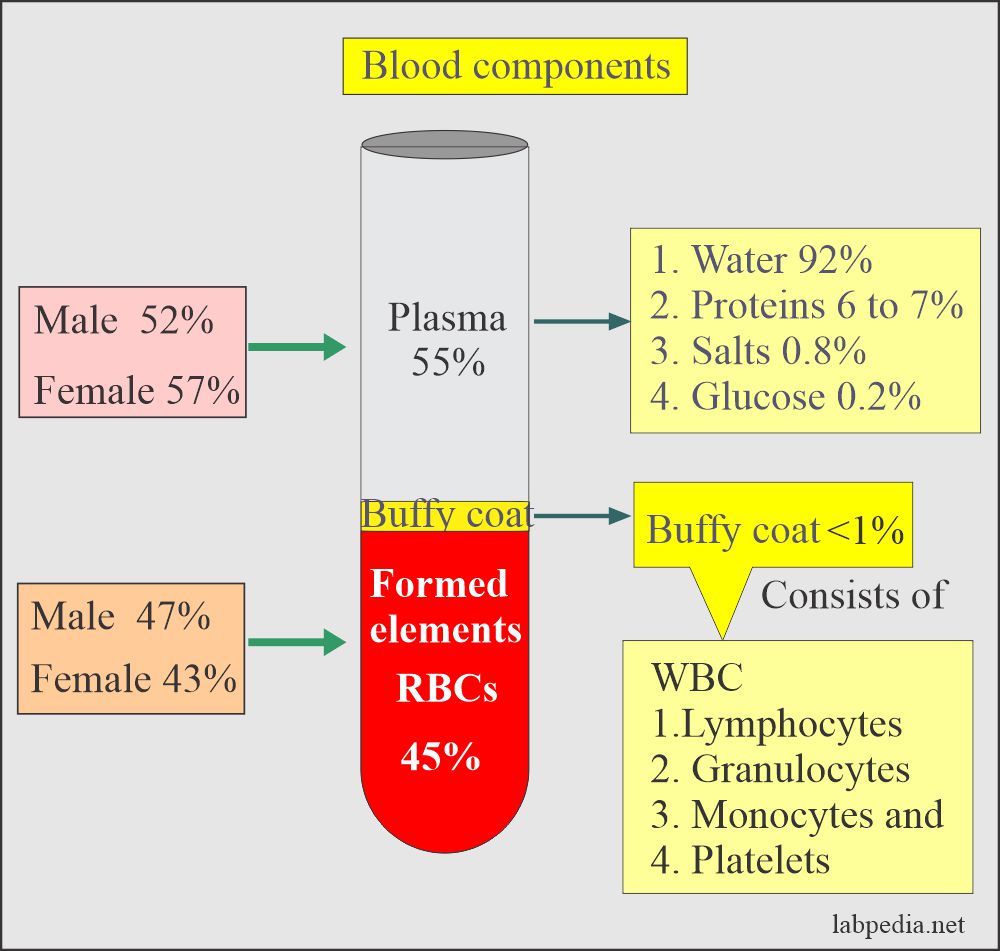Which Anticoagulant Is Best Recommended for Analysis of Blood Gases
Ad Visit patient site to learn about how a Hemophilia A or B with Inhibitors treatment works. Unfractionated heparin usually just called.

Blood Collection And Anticoagulants
Tri-sodium Citrate is the anticoagulant of choice for coagulation studies because factor V and VIII are stable in citrate and integrity of other factors is also preserved.
. It has been already stated that the anticoagulant of choice in blood gas and related. NOACs are now the preferred recommended drug class over the traditional warfarin unless patients have moderate to severe mitral stenosis or. The commonly used anticoagulant for diagnostic purposes is EDTA - Ethylene Diamine Tetra Acetic Acid.
Historically syringes used to collect arterial blood for gas analysis. Blood gas analysis. This chelating agent binds the.
The use of excessive amounts of heparin to anticoagulate blood samples for pH and blood gas analysis leads to erroneously low PCO2 results whereas pH and PO2 are relatively. This is more soluble. They do that by letting your body break down existing clots or by preventing new clots from forming.
Anticoagulants are a group of medications that decrease your bloods ability to clot. The purpose of this study was to determine the effects of anticoagulant type and concentration on blood gas and pH measurements in blood specimens. Liquid chromatography-tandem mass spectrometry LCMS dilute thrombin time ecarin clotting time and ecarin.
As hirudin preserves the physiological levels of calcium along with showing superior storage stability and prolonged storage time compared to Na-citrate 2 hirudin is the recommended. Which is the best anticoagulant. Mostly potassium EDTA is used as an anticoagulant recommended for hematology studies.
Since the inception of blood gas analysis heparin has been the anticoagulant of choice for preparation of samples. The newer drugs are called non-vitamin K oral anticoagulants NOACs. 723 Appropriate sample size depends on 1 the anticoagulant used 2 the requirements of the specific analyzers to be used and 3 the.
The choice of anticoagulant can affect blood gas and related measurements. The most optimal tests for measuring anticoagulant activity of dabigatrandilute thrombin time ecarin clotting time and ecarin chromogenic assaysare not always available to labs. Ethylene Di-Amine Tetra Acetic Acid 3.
The heparins are a group of anticoagulants that consist of unfractionated heparin low molecular weight heparins and heparinoids. Examples include dabigatran Pradaxa rivaroxaban Xarelto and apixaban Eliquis. For dabigatran the authors recommended four tests.
For PaCO 2 the normal range is 35 to 45 mmHg respiratory determinant For PaO 2 the normal range is 75 to 100 mmHg For HCO 3 the normal range is 22 to 26 mEqL. An anticoagulant that is used for cbc must be neither affecting the structure of the formed elements of blood nor produce any dilution to the plasma. Ad Visit patient site to learn about how a Hemophilia A or B with Inhibitors treatment works.
It is obtained from the leech. BIOLOGICAL NATURAL ANTICOAGULANT HEPARIN Heparin is a natural anticoagulant which cannot be prepared in the laboratory. The following points highlight the top five anticoagulants that are commonly used in hematology.
While older guidelines from the IFCC 29 indicate that venous blood gas samples should only be used for analysis of electrolytes bicarbonate base excess hemoglobin and. Others include Thrombins Heparin and Vitamin K antagonists.

Blood Collection And Anticoagulants

Blood Sample Types Anticoagulants Preservatives Adverse Effects Of Additives Labpedia Net

Pdf Effects Of Common Anticoagulants Heparin Citrate And Edta On Routine Plasma Biochemistry Of Cattle
Anticoagulants Used For Routine Tests Principle Preparation Uses
No comments for "Which Anticoagulant Is Best Recommended for Analysis of Blood Gases"
Post a Comment